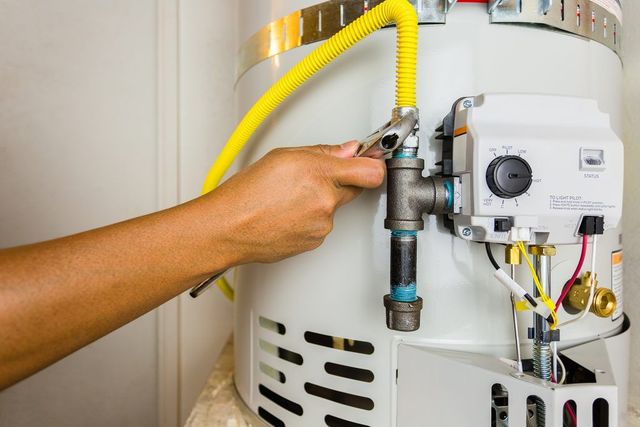Ensuring Durability of Your Home's Hot Water System: Maintenance Advice
Ensuring Durability of Your Home's Hot Water System: Maintenance Advice
Blog Article
What are your beliefs about Tips For Maintaining Your Hot Water Heater?

Warm water is essential for daily convenience, whether it's for a refreshing shower or cleaning dishes. To guarantee your hot water system runs successfully and lasts longer, routine upkeep is key. This post provides useful pointers and insights on exactly how to keep your home's warm water system to stay clear of disruptions and pricey fixings.
Introduction
Preserving your home's warm water system could appear challenging, however with a couple of easy actions, you can guarantee it runs smoothly for several years to come. This guide covers whatever from recognizing your warm water system to DIY maintenance suggestions and knowing when to employ specialist aid.
Value of Maintaining Your Warm Water System
Routine upkeep not only prolongs the life-span of your warm water system but also ensures it operates effectively. Ignoring upkeep can bring about decreased efficiency, higher power expenses, and also early failing of the system.
Indicators Your Warm Water System Demands Upkeep
Knowing when your hot water system needs attention can avoid major issues. Look out for signs such as irregular water temperature level, odd sounds from the heating system, or corroded water.
Purging the Water Heater
Flushing your hot water heater eliminates sediment accumulation, improving efficiency and prolonging its life.
Checking and Changing Anode Rods
Anode poles protect against deterioration inside the container. Checking and changing them when worn is important.
Complex Problems Requiring Professional Aid
Instances consist of major leaks, electric troubles, or if your hot water heater is constantly underperforming.
Routine Professional Upkeep Perks
Expert maintenance can include thorough inspections, tune-ups, and making certain conformity with safety standards.
Evaluating and Changing Temperature Settings
Readjusting the temperature settings makes certain ideal performance and safety and security.
Do It Yourself Tips for Maintenance
You can execute a number of maintenance jobs yourself to maintain your warm water system in top condition.
Looking for Leaks
Regularly check pipes and links for leaks, as these can lead to water damages and higher costs.
Comprehending Your Warm Water System
Before diving right into maintenance tasks, it's practical to comprehend the standard elements of your warm water system. Usually, this consists of the water heater itself, pipes, anode rods, and temperature level controls.
Regular Monthly Maintenance Tasks
Normal monthly checks can assist capture small issues before they intensify.
Checking Pressure Alleviation Valves
Testing the stress safety valve ensures it operates correctly and protects against excessive stress buildup.
Protecting Pipelines
Insulating warm water pipelines decreases warmth loss and can save energy.
When to Call a Specialist
While DIY maintenance is valuable, some problems need specialist knowledge.
Verdict
Regular maintenance of your home's warm water system is essential for effectiveness, long life, and cost financial savings. By complying with these ideas and knowing when to seek expert aid, you can ensure a reputable supply of warm water without unexpected interruptions.
How to Maintain an Instant Hot Water Heater
Before tinkering with your hot water heater, make sure that it’s not powered on. You also have to turn off the main circuit breaker and shut off the main gas line to prevent accidents. Also turn off the water valves connected to your unit to prevent water from flowing into and out of the appliance. 2. When you’re done, you have to detach the purge valves’ caps. These look like the letter “T†and are situated on either side of the water valves. Doing so will release any pressure that has accumulated inside the valves while at the same time avoid hot water from shooting out and burning your skin. 3. When the purge valves’ caps are removed, you have to connect your hosing lines to the valves. Your unit should have come with three hoses but if it didn’t, you can purchase these things from any hardware or home repair shops. You can also get them from retail stores that sell water heating systems. Read the user’s manual and follow it to complete this task properly. When the hosing lines are connected, open the purge port’s valves. 4. You should never use harsh chemical cleaners or solutions when cleaning your unit. Make use of white vinegar instead. It should be undiluted and you’ll probably use about 2 gallons. 5. Now flush your water heater. This task should probably take about 40 minutes. We can’t give you specific directions for this because the procedure is carried out depending on the type, model and brand of your heater. With that being said, refer to the user’s manual. 6. When you’re done draining the unit, you have to turn off the purge port valves again. Remove the hosing lines that you earlier installed on each of the water valves. Put the valve caps (purge port) back in their respective places and be very careful so as not to damage the rubber discs that are found inside these caps. 7. Now that everything’s back in place, check your user’s manual again to find out how to reactivate your water heating system. 8. Once it is working, turn one of your hot water faucets on just to let air pass through the heater’s water supply pipes. Leave the tap on until water flows smoothly out of it. https://www.orrplumbing.com/blog/2014/september/how-to-maintain-an-instant-hot-water-heater/

As a serious person who reads about How to Maintain a Hot Water Heater in a Few Simple Steps, I was thinking sharing that section was a great idea. Be sure to pause to distribute this page if you liked it. We treasure your readership.
Book Now Report this page